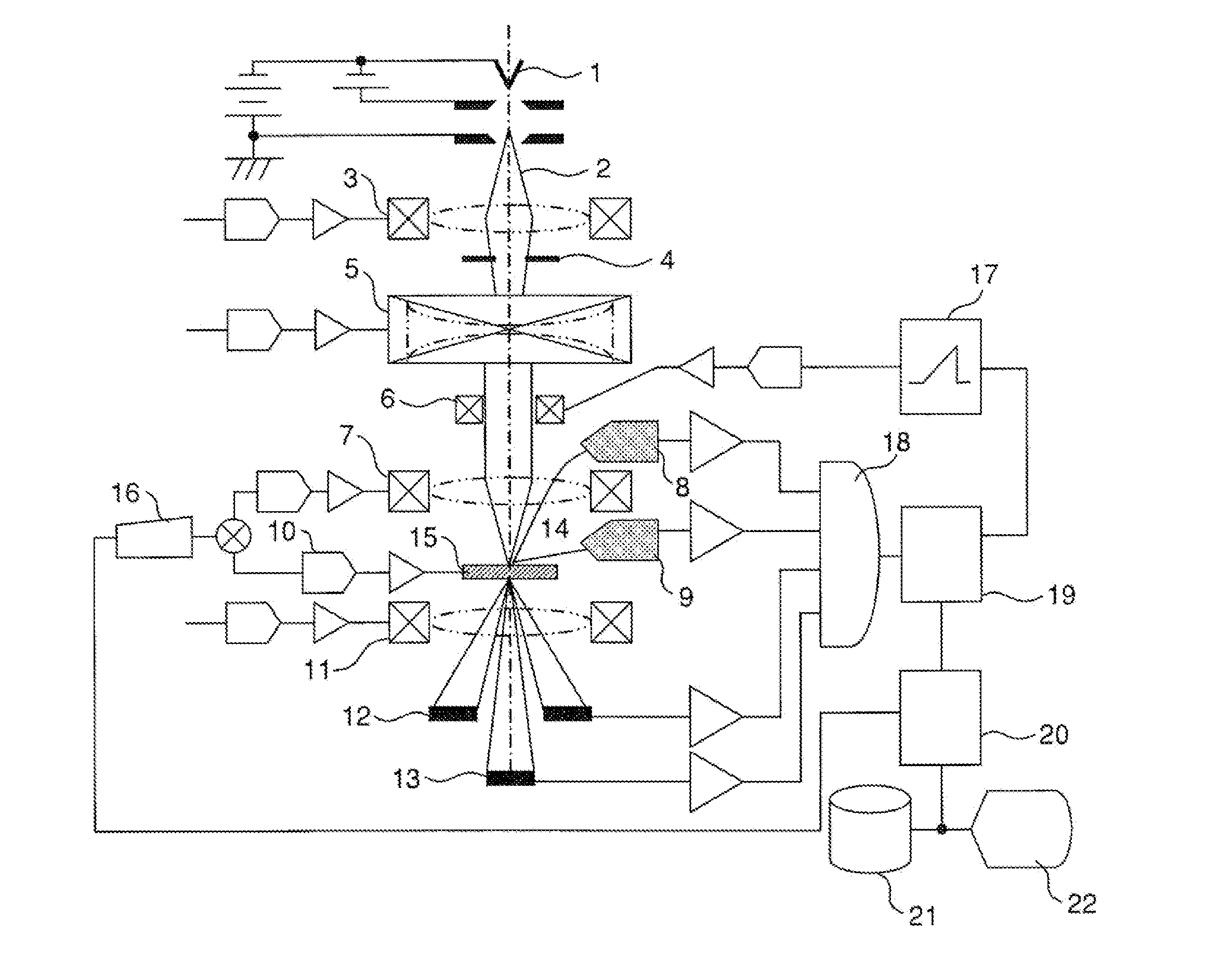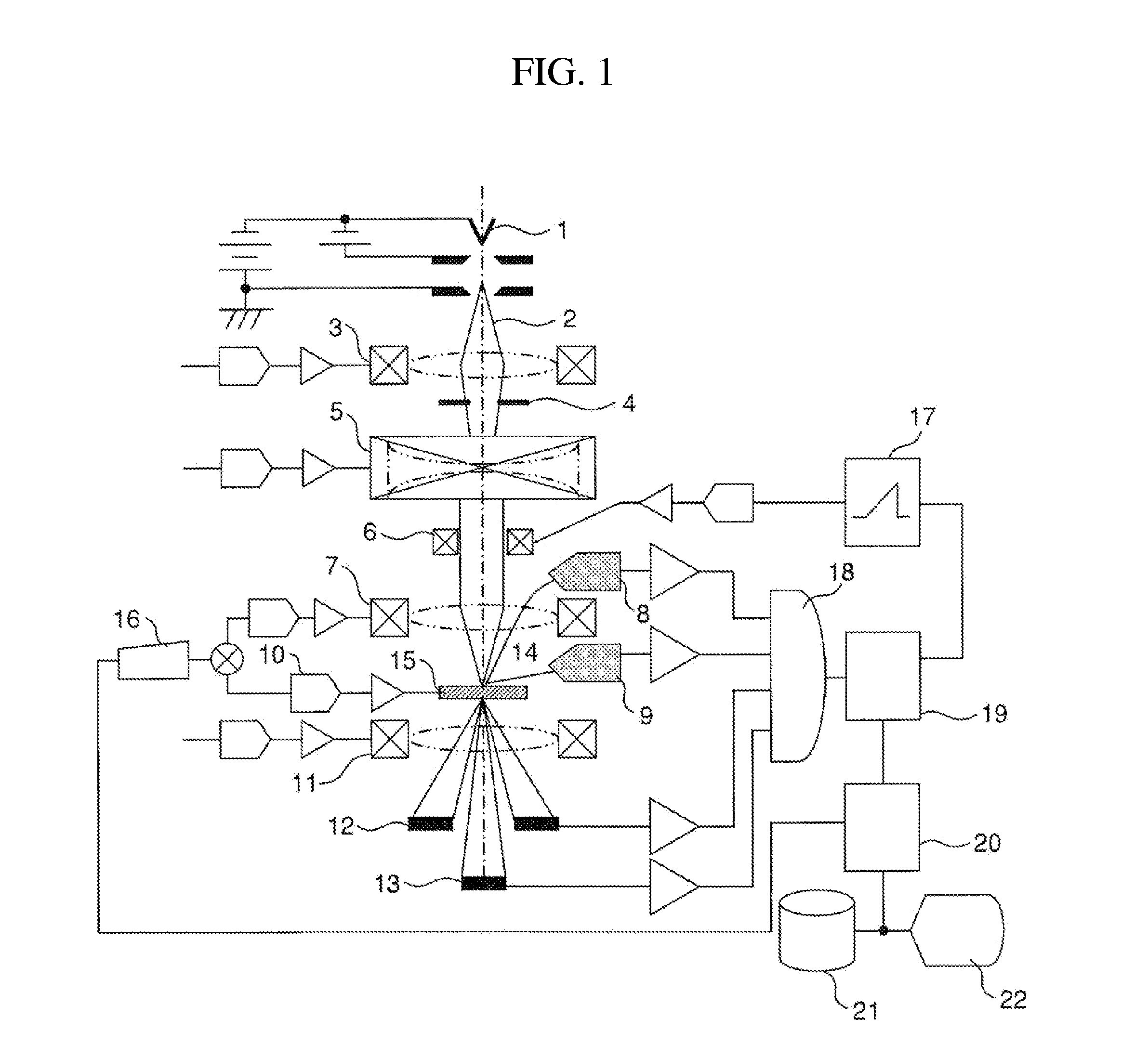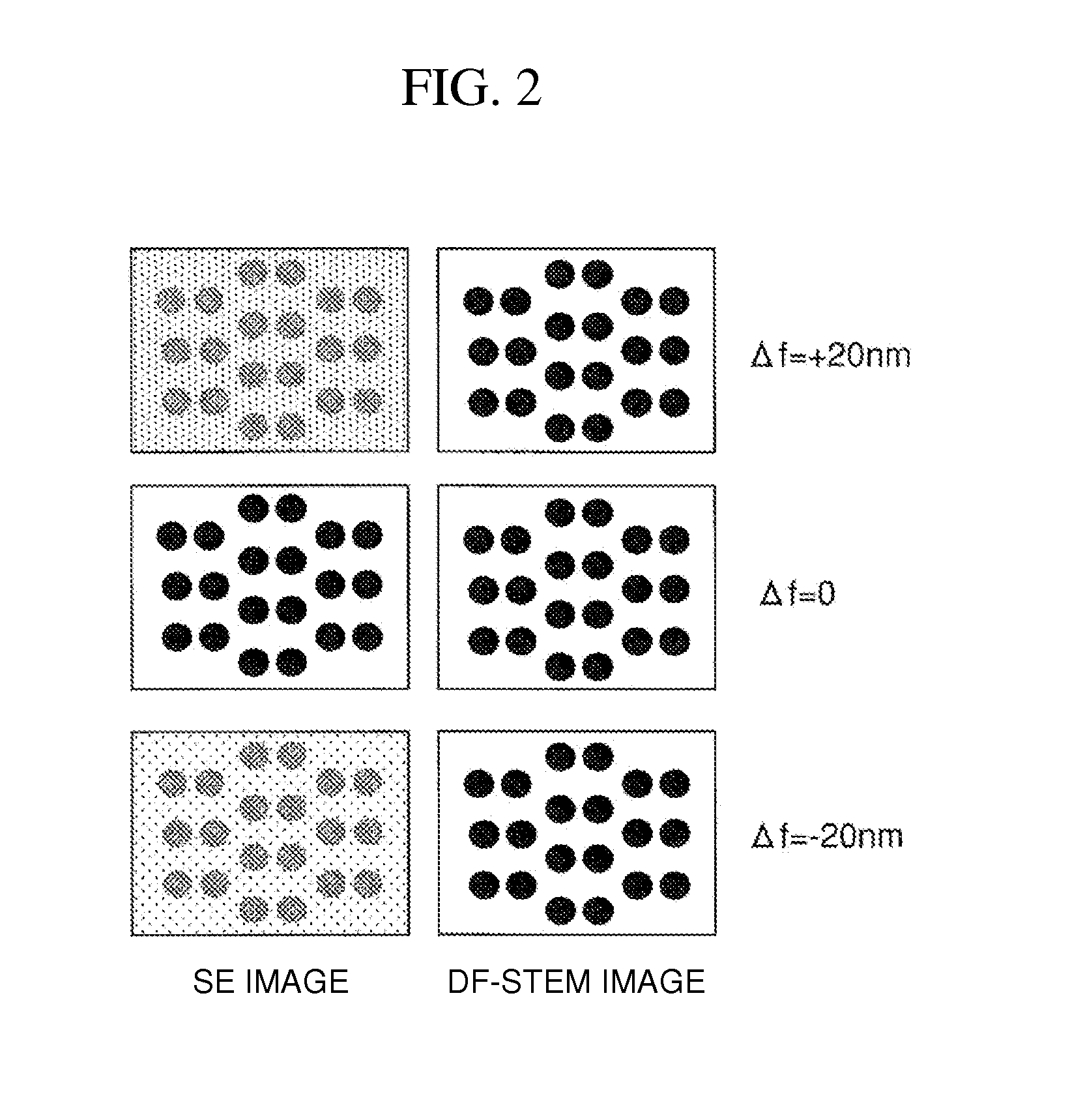Scanning electron microscope and scanning transmission electron microscope
a scanning electron microscope and electron microscope technology, applied in material analysis using wave/particle radiation, instruments, nuclear engineering, etc., can solve the problems of not easy to identify the position of atoms, unwanted signals are occasionally observed, and the direction position cannot be identified, so as to achieve the effect of easy visualization
- Summary
- Abstract
- Description
- Claims
- Application Information
AI Technical Summary
Benefits of technology
Problems solved by technology
Method used
Image
Examples
example 1
[0056]FIG. 1 is a schematic diagram illustrating an example of a charged particle according to the present invention.
[0057]A primary electron beam 2 generated by an electron gun 1 is condensed by a condenser lens 3 and passed through an aperture 4. While, in FIG. 1, the condenser lens is shown to have one stage for simplicity's sake, the condenser lens may have two stages for changing the illumination angle, or three or more stages for changing the illumination angle while the demagnification of an electron source produced by the electron gun is fixed. The aperture 4 may be set to an arbitrary aperture diameter for obtaining a desired illumination angle on the specimen surface. The illumination angle of the electron beam with which the specimen is irradiated is determined by the aperture diameter. While the aperture is positioned in a subsequent stage to the condenser lens, the installed position is not particularly limited for the purpose of changing the illumination angle.
[0058]In...
example 2
[0068]Next, an example of obtaining a two-dimensional electron image by varying the focal depth will be described.
[0069]First, the relationship between the illumination angle and focal depth of the primary electron beam probe will be described with reference to FIG. 3. The focal depth ZDOF of the electron beam probe size d at the illumination angle α is expressed by expression 2.
[Expression2]ZDOF=dαExpression2
[0070]Thus, when the electron beam probe size d is fixed, the focal depth becomes shallower as the illumination angle of the electron beam is increased. Accordingly, in order to double the focal depth, the electron beam illumination angle may be halved.
[0071]FIG. 4 is a diagram illustrating the relationship between the incident electron beam on the specimen and a secondary electron image of the specimen, which has structures in the depth direction of the incident electron beam. For example, a structure A has an elemental composition in the specimen surface layer portion differe...
example 3
[0078]FIG. 5 is a diagram illustrating the relationship between a specimen having a tapered structure and the electron beam incident thereon. By using the specimen with the tapered structure, the magnitude of focal depth and the amount of defocus can be measured. The specimen is fabricated and prepared by designing the size of the structure such that, for example, the length of the specimen uppermost surface is Ltop, the length of the specimen lowermost surface is Lbottom, and the taper angle is θ. The specimen with the tapered structure may be fabricated through epitaxial growth of different materials on a single crystal wafer by a manufacturing technique such as sputtering (physical vapor deposition), chemical vapor deposition (CVD), or molecular beam epitaxy (MBE), followed by selective etching of specific areas.
[0079]The focal depth measurement is performed as follows. Under the condition that the focal depth at the illumination angle α is ZDOF, a secondary electron image is gen...
PUM
 Login to View More
Login to View More Abstract
Description
Claims
Application Information
 Login to View More
Login to View More - R&D
- Intellectual Property
- Life Sciences
- Materials
- Tech Scout
- Unparalleled Data Quality
- Higher Quality Content
- 60% Fewer Hallucinations
Browse by: Latest US Patents, China's latest patents, Technical Efficacy Thesaurus, Application Domain, Technology Topic, Popular Technical Reports.
© 2025 PatSnap. All rights reserved.Legal|Privacy policy|Modern Slavery Act Transparency Statement|Sitemap|About US| Contact US: help@patsnap.com



